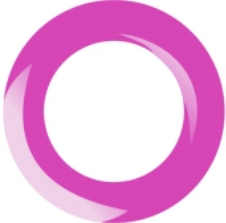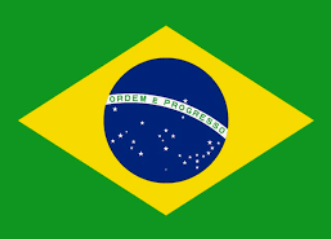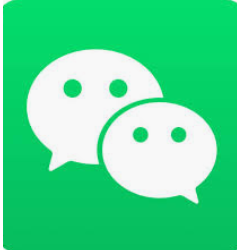 Many of us communicate with our phones, tablets, computers, etc. on some type of social media platform today: Twitter, Facebook, LinkedIn, etc. However, there was another popular social media platform created by Google that people did not know or forgotten it existed several years ago. Orkut started in 2004, which around the same time when Facebook launched. At its peak, Orkut had 30 million people in its communities; however, Google decided to shut Orkut down in 2014 and replace it with Google+, which is a more robust platform that had many more online features, such as Google Hangouts. Even though the company shut down its social media platform, there are some valuable marketing lessons learned from its successful social media strategy before its demise.
Many of us communicate with our phones, tablets, computers, etc. on some type of social media platform today: Twitter, Facebook, LinkedIn, etc. However, there was another popular social media platform created by Google that people did not know or forgotten it existed several years ago. Orkut started in 2004, which around the same time when Facebook launched. At its peak, Orkut had 30 million people in its communities; however, Google decided to shut Orkut down in 2014 and replace it with Google+, which is a more robust platform that had many more online features, such as Google Hangouts. Even though the company shut down its social media platform, there are some valuable marketing lessons learned from its successful social media strategy before its demise.
Target Audience
One social media marketing lesson learned from Orkut’s success is its clear purpose and target audience. A successful social media strategy targets small niche audiences through diffusion and community social media messages. Moreover, every goal must identify the target audience populations (target, niche, individual). Orkut’s purpose was to give users the ability to find communities when they searched with keywords, such as titles, descriptions, and memberships. The social media platform was not popular in the United States; however, it was a huge success in Brazil and India. At that time, being part of a social networking site meant that a person was well connected in the technology domain because it was an invite-only membership.
Brazil’s Branded Social Experience
 Brazilians are fun-loving and sociable people. They spend an average of 3 hours and 40 minutes per day on social media, and the government invested heavily in the country’s internet connectivity, which improved the technology gap between the rich and poor. There are over 122 million people Brazilians on social media, which equates to 87.7% of the entire population. Moreover, 96% of Brazilians use their smartphones to communicate on social media platforms. Orkut used to be the most popular social media platform in Brazil; however, consumers were forced to change when it was shutdown. Google+ replaced Orkut, and some users moved to that social media platform; yet, WhatsApp became the most popular social media application on Brazilian smartphones because it was inexpensive for sending and receiving text messages.
Brazilians are fun-loving and sociable people. They spend an average of 3 hours and 40 minutes per day on social media, and the government invested heavily in the country’s internet connectivity, which improved the technology gap between the rich and poor. There are over 122 million people Brazilians on social media, which equates to 87.7% of the entire population. Moreover, 96% of Brazilians use their smartphones to communicate on social media platforms. Orkut used to be the most popular social media platform in Brazil; however, consumers were forced to change when it was shutdown. Google+ replaced Orkut, and some users moved to that social media platform; yet, WhatsApp became the most popular social media application on Brazilian smartphones because it was inexpensive for sending and receiving text messages.
 Since most Brazilians use smartphones to communicate, the social media landscape depicts a tremendous opportunity for brands to enter and gain ground in the market. Unlike Facebook, Twitter, and others, brands on WhatsApp speak directly to consumers; furthermore, 98% of WhatsApp messages are opened and read. Instead of purchasing advertisements on Facebook or Twitter, WhatsApp gives brands direct communications to consumers around the world. Therefore, new products, catalogs, sales, etc. are offered to consumers immediately, and they are likely to take some form of action. On the other hand, consumers can communicate directly to the brands and get customer support, or their questions answered.
Since most Brazilians use smartphones to communicate, the social media landscape depicts a tremendous opportunity for brands to enter and gain ground in the market. Unlike Facebook, Twitter, and others, brands on WhatsApp speak directly to consumers; furthermore, 98% of WhatsApp messages are opened and read. Instead of purchasing advertisements on Facebook or Twitter, WhatsApp gives brands direct communications to consumers around the world. Therefore, new products, catalogs, sales, etc. are offered to consumers immediately, and they are likely to take some form of action. On the other hand, consumers can communicate directly to the brands and get customer support, or their questions answered.
Brazilians are savvy spenders, and they are always looking for a good deal. The challenge for online retailers to gain market share in Brazil is that they must monitor and keep pace with price changes and offers by competitors. Even though Brazilians and brand loyalists, 19 percent shop around to find retailers selling the same brand at a lower price, 14 percent wait for sales, and 60% will not go back to the higher-priced brand if they switch to another. Therefore, online retailers must be keenly aware of the market conditions for their brands and, effectively, consistently have marketing campaigns to drive sales continuously.
Final Thought
Orkut established a social media foundation in markets like Brazil; however, the death of the social media platform was due to Google’s shift in its overall business strategy. Afterward, Orkut lacked the necessary resources to keep up with consumer demands for more features and capabilities. The creator of Orkut launched a new mobile social network called Hello. It is the first social media application designed to connect people that share the same passions and love anything. The social media platform opens an opportunity for brands to communicate with loyalist that are passionate about their products. Social media continue to evolve; therefore, it remains to be seen how brands use these platforms to communicate to consumers in the future creatively.




0 Comments